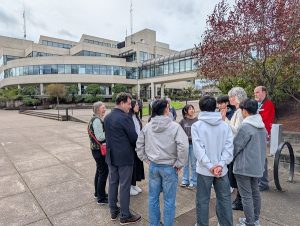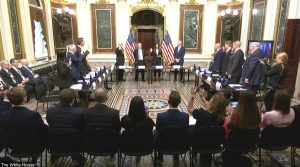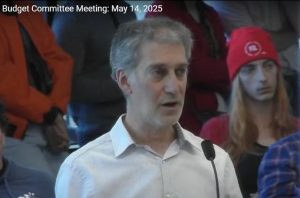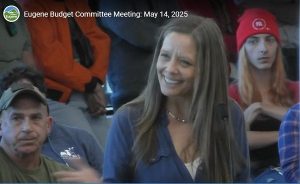Surprisingly, we agree across party lines in 3 areas
5 min read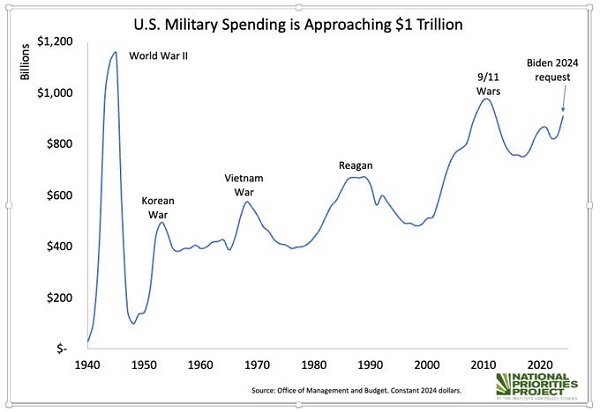
by Marty Wilde
Americans have some surprising areas of agreement in politics. Our current political discourse may be marked by a divisive tone, but most of us see the need for major repairs to some of our bedrock policies and institutions. A recent poll found that 78% of us were dissatisfied with the status quo. We may disagree greatly on which problems should get priority and how exactly to fix them. However, three areas command our common attention: military capability, higher education, and immigration systems.
The military needs reform
Many experts in the defense community say that our current military capabilities are ill-suited to the kinds of conflicts we are most likely to see in the future. For example, the war in Ukraine shows the futility of “big footprint” military groupings, like large armored formations, air bases, and enormous capital ships, all of which are susceptible to the kind of small drones that even small countries can afford. Conservatives tend to favor reinvestment and larger military budgets, while liberals point out that our large and inefficient military establishment consumes resources that would be better spent on other priorities.
In 28 years of military service, I discovered two truths about planning for the future in the military. First, in a seniority-based hierarchy, innovation will always lose out. Second, even when the Pentagon wants to reform, Congress will most often deny them the ability to do so. Why does the F-35 program persist, despite delays, cost overruns, and concerns about obsolescence on the modern battlefield? The answer is simple – Lockheed Martin sources parts for it from 47 different states, giving 94 senators a stake in it.
In political life, I always believed that we had to spend tax dollars efficiently, but I was often alone in advocating for that goal. The problem likely requires a Congressional task force with clear mandates: reform the military to meet today’s challenges, keep the budget under a reasonable cap, and keep defense spending flowing across the country.
Higher education is too expensive
We broadly agree that post-secondary education is the key to the American Dream, but cost puts it out of reach for many. Consider that annual tuition at the University of Oregon now exceeds $15,000 per year. Tuition at Lane Community College is $5,700. Four-year state institutions often suffer from underinvestment by their state legislatures. But a more likely driver of cost is the attempt to be everything to everyone, with expensive commitments to on-campus living, athletics, and myriad other programs.
With fully 50% of students coming from out of state and less worried about costs, UO students also tend to vote for fees that push the cost of attendance even more out of reach for their low-income peers. From 2010 to 2022, the average inflation of college tuition at public four-year institutions was 12%.
Putting the brakes on spiraling college costs means making some tough choices, both in controlling costs and improving outcomes. A hard-eyed look at the budget would identify (non-academic) programs that either aren’t self supporting or don’t significantly contribute to student success. Prudent budget allocations require an explicit connection to local or state workforce needs and better state funding to meet those needs.
For instance, LCC’s nursing program is far too small to meet the local demand, largely because LCC can’t compete with private sector salaries for nurses qualified to teach in the program. The state funding model for community colleges does not consider workforce needs or the cost of instruction, making it too expensive to expand the program.
While the funding model for four-year colleges and universities does have some workforce incentives, they are comparatively weak. On one hand, no student should ever be told that they can’t study whatever interests them, but on the other hand, the failure of the higher education system to meet real workforce demands while charging high tuition freezes far too many young people out of the American Dream.
Our immigration system requires reform
Whatever you value in an immigration policy, our current system does not reflect it. It’s important to appreciate the scale of the problems.
First, when it comes to emergency immigration – refugees and asylum seekers – the total annual number admitted is usually under 300,000, although the number claiming asylum is several times that.
Second, our employment-based immigration system admits more – about 750,000 per year – but still far less than our economy needs. There’s a gap of about 3 million workers between open jobs and those seeking employment. Also, tourist visas (for people who want to come here temporarily and spend money) are significantly backlogged, creating a further drag on the economy.
Finally, the huge backlog in our asylum system, the lack of a robust system of consulates south of the border, and, yes, poor border security create problems at the border that serve neither the interests of national security nor those of migrants who might qualify for asylum.
The nursing shortage represents a failure in both higher education funding and immigration, as we neither educate nor immigrate enough nurses to meet demand.
Again, this problem can’t be solved overnight. Even if the president were to close the border overnight (which he lacks the legal authority to do), these problems would still persist. A reasonable compromise would include better funding for border security, better access to the asylum system for people in Mexico and Central America, better funding for the asylum system, and an employment-based immigration system that actually addresses our workforce needs.
Unfortunately, these fixes require a more functional Congress than we currently have.
In a year where every politician wants to demonize the “other side,” we often actually agree on problems across party lines. We just differ in our preferred ways to solve them. The tragedy of our current politics is that the persistent demonization of people who disagree with our own point of view prevents us from electing problem-solvers to political office.
The next time you write someone who represents you in government, consider asking them not only to support your perspective on an issue, but also to explain how they are working with politicians from the other party to solve the problems we all face together.
Marty Wilde represented central Lane and Linn counties in the Oregon legislature. For more of his Letters From a Recovering Politician, subscribe at https://martywilde.substack.com/subscribe.
According to the National Priorities Project, the average taxpayer in 2023 contributed $1,748 to Pentagon contractors, with $249 of that going to the largest Pentagon contractor, Lockheed Martin.


